- Tools
- Learn
- Help
Before you leave..
Why not download RevGlue latest free eguide.

What Is Digital Marketing?

Digital marketing is a term defined to achieve your business objectives and goals using the online channels that include but are not limited to search engines, social media platforms, affiliate marketing, email marketing, content creation & advertising in order to educate, engage & market your product or service to potential buyers. Digital marketing now includes other forms of new digital channels such as mobile, digital TV, digital watches and other digital and IoT related products linked with the internet.
Just a decade ago, if a business wanted to reach out to target customers, they would promote using traditional marketing mediums such as TV, radio, print. Simply because that’s where the potential customers’ used to spend their time. However, as humans evolved our technology advanced giving rise to a digital revolution. To simply state, people started spending more time on online platforms such as Google, Facebook, Instagram, YouTube etc to stay acquainted with news, entertainment and commerce. Hence, today our lives run on a click.
Digital has become a part of our existence. From shopping apparel to groceries, furniture & getting laundry delivered everything is online. With this new shift, marketers did not waste any time and quickly adapted to use social media & other digital tools to push & pull the consumer which gave birth to Digital marketing.
No matter the size of your business, digital marketing is the most effective way to grow and achieve your goals which could vary from any of the following:
Top Objectives of Digital Marketing
Apart from these business objectives, digital channels can be used effectively for:
Top Ten Types of Digital Marketing
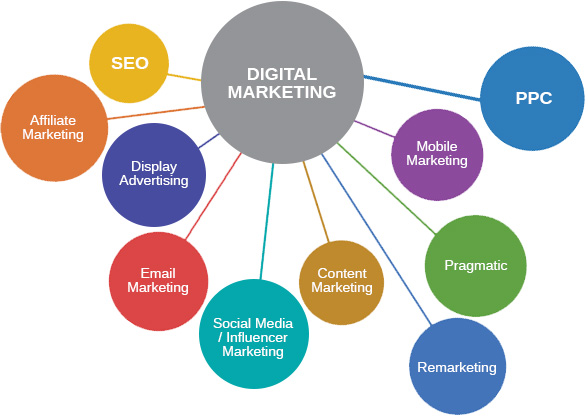
1 - Search Engine Optimisation (SEO)
2 - Search Engine Optimisation (PPC Paid Marketing)
3 - Affiliate Marketing
4 - Social Media / Influencer Marketing
5 - Display Advertising
6 - Email Marketing
7 - Content Marketing
8 - Mobile Marketing
9 - Pragmatic
10 - Remarketing
1 - Search Engine Optimisation (SEO)

Whoever controls the door to the Internet, controls the Internet. And now search engines have become the default entry point to the Internet. We start with a simple search by typing a few words into a search engine, often oblivious to exactly what happens behind the scenes. When we search in Google, for example, we are not actually searching the Internet; we are searching Google's index of the Internet, that is, the list of the sites that it has found online. So the challenge for effective search engine optimisation (SEO) involves understanding how search engines work and how to play by their rules.
SEO statistics by Forbes cite Borrell Associates to emphasize that by 2020, businesses in the US will be spending as much as $80 billion on SEO services. This number is significantly higher than in 2016 and 2018 when businesses were spending $65.26 and $79.27 billion on search engine optimisation, respectively.
The SEO Process
1. Goals. From the outset, it's important to be aware of the benefits of SEO. They will serve as key drivers as you navigate the development of your SEO strategy. You must decide upon and set up clear, realistic goals and targets for your SEO campaign. The benefits of spending time developing goals far outweigh the risks of walking the plank blindfolded into the competitive world of search marketing. Just one error could result in a six-month search engine penalization — with SEO, ignorance certainly is not bliss!
2. On-page optimization. This deals with the granular, technical optimization of the various elements on your website. It involves ensuring search engines can easily read, understand, crawl through, and navigate the pages of your site to index it correctly.
3. Off-page optimization. This refers to techniques used to influence website position in organic search results that cannot be managed by on-page optimization of your site. It's a long-term, iterative process focused on gaining website authority, as determined by what other websites say about you. To put it simply, it's about building a digital footprint and earning online credibility.
4. Analyze. This stage is very much a cyclical process. You're now looking at the data coming back, analyzing it, and deciding upon the adjustments needed going forward. This will help you tweak your goals accordingly as you implement additional goals and changes.
Top Five SEO Tools
2 - Search Engine Marketing (PPC - Pay Per Click Marketing)

Appearing in the number-one position of a SERP is no easy feat, but what if you were told that SEO was not the only way to achieve this mammoth accomplishment? Search marketing, in particular pay per click (PPC) advertising, is another lucrative option available to you. The difference between SEO and PPC, however, is in the name, you have got to pay for PPC! Have you ever noticed those three listings at the top of a SERP with a yellow ad icon beside them, almost unfairly pushing down organic search listings? Those are the product of PPC savvy digital marketers, reaping the benefits of high click-through rates (CTRs) by paying a little extra.
The Process
1. Set your goals. Before beginning and investing in your PPC journey, you first need to learn about the benefits PPC can bring to your business. With this knowledge, you can then define exactly what your goals will be and how to align KPIs with them.
2. Set up your account. In this stage you will be guided step-by-step through every element involved in setting up your very own Google Ads account, from creating PPC campaigns to assigning budgets.
3. Manage your campaigns. This stage details what happens after your campaigns have been launched and how best to manage them. The finer details of the Ads interface will also be explored to help you discover the variety of options you can implement to yield a higher return on investment (ROI).
4. Analyze your results. The final stage in the PPC process is all about measuring your success through KPIs, tools, and reports. By using this data you will be able to better optimise your campaigns for the next iteration, while considering the relevant data protection and privacy issues associated with PPC.
Top Five PPCAd Networks
3 - Affiliate Marketing
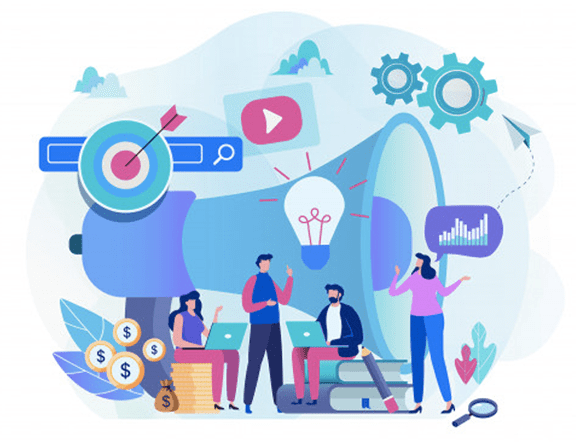
Affiliate marketing combines the value of personal sales and technology solutions offered by online marketing. To companies with lower budget it provides an opportunity to increase profits and raise awareness of its brand.
In today's marketing we are recording condensed advertising information flow. Advertisement recipient perceives from all sides. Marketing communication follows the trend of the closest contact with the recipients. This is doubly true in online marketing. With social networks people provide the most personal information that today's technology can process in their favor. It is still, however, communication between the company and customers. Affiliate marketing is when you get paid a commission for promoting products / services for other companies.
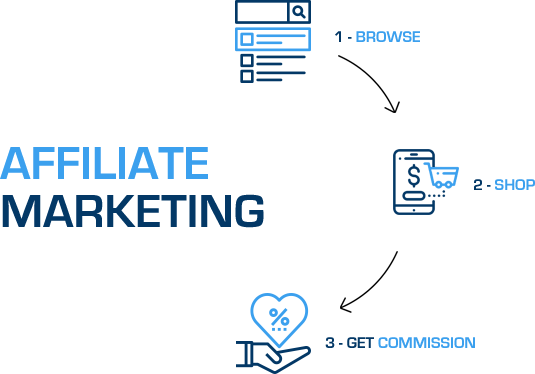
Entities in Affiliate Marketing
Many affiliate marketing experts claim that this type of affiliate marketing works on the relationship between two entities, namely:
1. Merchant = merchant, sponsor, who created the affiliate program.
2. The actual affiliate = intermediary, the person who accepts the conditions of the affiliate program and promotes the product on the internet.
With the growing popularity and effectiveness of affiliate marketing to the said two entities joined the third - the owner of the affiliate network. This entity monetises its position in this relationship by providing space to create affiliate programs for merchants. In the hierarchy of these entities it is going to the highest point.
For the proper understanding of the financial flow of commissions it is necessary to explain theoretically and define the individual entities.
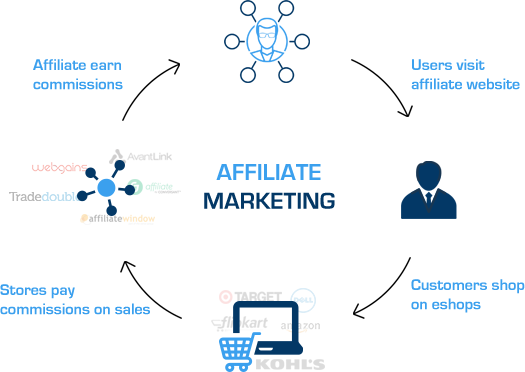
Affiliate Network is a central hub tech and affiliate campaign management company on which take place and run affiliate programs that are generated by merchants. Affiliate Network brings together not only merchants but affiliates themselves as well. The value of affiliate network is expressed by the number of active affiliate programs and the number of available affiliates. Some networks require a fee for access to the network. Other work on the principle of sales commission. Apart from the space for creation program they offer affiliate know-how as well. Networks are able to develop a detailed analysis of the target audience, how to communicate or make judgment on the affinity of the product for affiliate marketing.
Merchant is an eCommerce store who enters into affiliate networks in order to set up an affiliate program, increase profits and expand its product among Internet users at relatively low cost. The merchant, therefore, offers its products through an affiliate program. He creates the conditions under which the affiliate receives a commission for each sale. Affiliate must then perform some type of action. This is usually about the sale, but there are programs that have a commission for registration, for filling in the form and so on.
Affiliate is a person who can register to a particular affiliate program and promote the product in the online environment. The forms of promotion are diverse, but it consists mostly of banners and simple text ads. Every registered affiliate acquires its special link - referral link, which becomes the identification in the system, with which the system can detect and record activity of affiliate.
The Benefits of Affiliate Marketing
1. You can make a lot of money without lots of effort or extraordinary skills.
2. You can make money while you sleep. Once you have a profitable campaign it can make money for you 24/7. You can even build employees and systems to take over everything.
3. It’s simple to get started. All you need is a computer, internet, and some money to spend on traffic. You don’t have to hire employees or rent office space.
4. There are no commitments or contracts. Don’t want to promote the offer anymore? Then stop. Want to go on vacation for 3 months? You can pause the campaign and go.
5. It’s the best direct marketing training in the world. Many people use affiliate marketing as a stepping stone towards new opportunities. Affiliate marketing is business training on steroids.
The role of SaaS solutions in Affiliate Marketing
The aim of SaaS solutions such as RevGlue.com in affiliate marketing is to make affiliate marketing simple with unique set of interactive tools, structured contents, and dynamic modules. These SaaS tools and contents are offered on monthly subscription of on revenue share basis to publishers to help them monetise their current affiliate websites, mobile applications or create new websites within minutes.

Top Affiliate Networks in the UK
4 - Digital Display Advertising
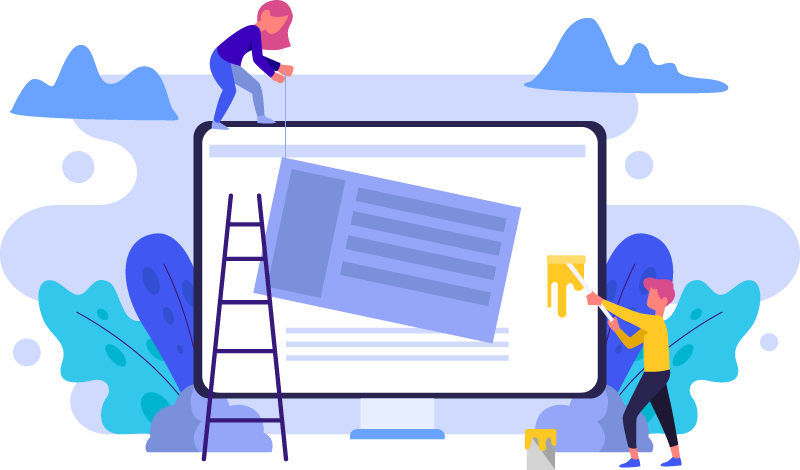
Do you know those ads that follow you around the Internet? The ones that somehow know exactly what you have been searching for? Your computer is not psychic, you are simply experiencing remarketing, one of the tools of digital display advertising (DDA). As a digital marketer, you can create online ads just as you would for an offline campaign. These online ads (or display banners) contain copy, logos, images, maps, and video, anything that will hook users as they browse. Then you can call on certain publishers to pick the most relevant websites, social media channels, and devices for your ads to appear on. You learned that SEO is all about driving traffic to your site. Just as you should optimise your site so that it shows higher in search results, you should also optimize the ads that direct users to it by including a hyperlinked call to action, for example.
The Process
1. Define. This stage starts by helping you to identify and segment your customers based on demographics like age, location, and interests. You will learn how to find the right publisher for your ads and how to set display campaign objectives in line with your overall goals.
2. Format. This stage will introduce a range of creative ad formats, among which you can choose the most appropriate, according to your target audience and budget. Once you have looked at formats, you will learn about the media channels available to you and how you can create compelling ad copy across these channels.
3. Configure. You can maximize your campaign's potential by using targeting tools like Google Display Planner and assigning KPIs to help you track your campaign on an ongoing basis. Once you go live, you can't hide from the eyes of the public so it is best to iron out any bumps early on.
4. Analyze. The final stage is when you measure the success of your campaign using analytics. Then you can enhance and optimize your ads as necessary before getting ready to relaunch.
Top Five Display Advertising Ad Networks
5 - Email Marketing

In a constantly evolving digital landscape, tools and platforms come and go. Email has remained a steadfast and dependable channel with 3.2 billion email accounts worldwide. That's three times more than the number of Facebook and Twitter accounts combined, and if optimized correctly, an email marketing campaign can be all-powerful, driving better returns on investment and higher levels of engagement. The fact that you can dispense with printing flyers, save trees, and be an email marketing pro? Well, those are just added bonuses!
The Process
1. Data. The first step in any email marketing campaign should always be the creation of a subscriber list. This is a compilation of email contacts who have consented to receive your communications (they've opted in). You can create as many lists as you need in order to segment your subscribers so that you can target them with relevant, personalized content that they will actually care about.
2. Design. This step involves deciding which content you should include in your email and the design principles you must follow, to ensure that your email ends up in a subscriber's inbox, ready to engage and excite them.
3. Delivery. This step is all about the delivery of your marketing emails. You will learn how they are managed through an email service provider (ESP), which facilitates everything from email style and layout to scheduling. Step 3 covers what happens to an email after it has been sent and delivered. You will learn how to utilize testing to decide what your email should look like and when you should send it to guarantee the best possible open rates.
4. Discovery. Analysis and reporting are fundamental when revising and refining your digital practices. Leveraging analytics tools will allow you to track every cent spent on your email marketing and let you track open rates, total opens, and unique opens. You will be able to track ROI through CTRs, unsubscribes, and bounce rates. Analytics tools are a gateway to highly detailed, clinical data that will enable you to tailor your email marketing strategy, taking into account both your successes and failures.
Top Email Delivery Tools
6 - Social Media Marketing
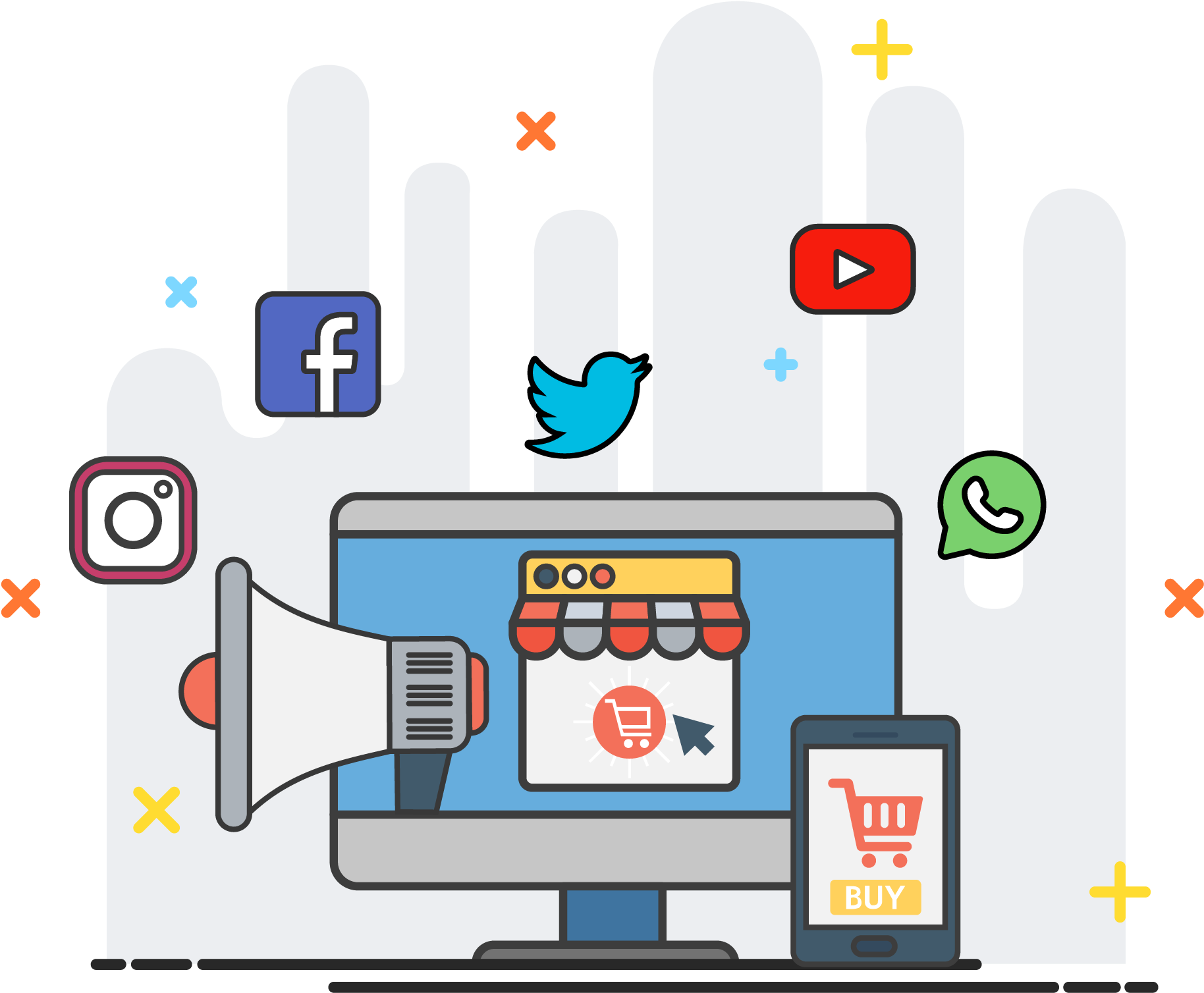
Find me on Facebook. Follow me on Twitter. Check out my blog. Ten years ago these phrases meant nothing, yet now they are part of everyday speak. More and more people are connecting through social media to stay in touch with friends, to date, or to interact with brands and businesses. Which is great news for digital marketers like you. This is no time to be a wallflower. Because in order to survive and thrive, you will need to be active on the main platforms, competing in an online popularity contest with other companies.
SMM is a huge topic and the most important digital marketing type.
Media Types: Earned, Owned, and Paid
Before getting into how you can promote yourself on social media, let's look at the options that are available. You can choose to post content through the following media types:
Earned media is free publicity, generated by fans and customers in response to content they like (your kudos for making them happy).
Owned media includes communications that a brand creates and controls via its own platform (you blow your own trumpet).
Paid media is any paid activity that drives traffic to owned media properties (you pay up for the shout out).
Whatever option you choose, remember that there will be hidden costs involved. An engaging profile requires a great copy, multimedia assets like photos and videos (which you may want to take yourself), and a solid strategy. And since there is no point in having the world's greatest profile if no one knows you exist, you will have to fork out for some kind of advertising to reach socially tuned-in audiences. Finding and training the right staff, compiling digital assets, and advertising your business takes time and money—so bear that in mind when setting out your short- and long-term goals.
Top Social Media Marketing Tools
SMM and Influencer Marketing
A Modern Phenomenon. Creating a New Frontier Of Virtual Opportunities.

Influencer marketing involves marketing products and services to those who have a sway over the things other people buy. This market influence typically stems from an individual’s expertise, popularity or reputation. Marketing to an audience of influencers is similar to word-of-mouth marketing, but it does not rely strictly on explicit recommendations.
Social media have been crucial in revitalizing this instrument, creating greater and better opportunities for its use. While in the past, branding has been focused exclusively on well-known personalities, it has later moved to well-known bloggers and today it is about everyday consumers who have a huge impact. More and more brands and companies are focusing on their marketing activities to find new opportunities for presenting themselves. They are looking for someone to ‘tell’ their story.
Who Is An Influencer?
Every time you go online, you’ll interact with influencers. Whether you’re watching a video from your favourite YouTube vlogger, picking up recipes from a chef on Pinterest, or reading the latest Facebook story about your favourite celebrity, you’re engaging with an influencer. These are the people who are at the forefront of social trends. They could be innovators, who create new ideas, concepts or content, that grabs the attention of social media on a regular basis. Or early adopters. Those that discover trends before anyone else, and invigorate them with their own creativity, spreading them further into the social medium.
Influencers have their finger on the internet’s pulse, and social media users listen to them.
The 3 Types of Influencers.
Generally, when the industry talks about influencers, they categorize them into 3 levels based on their potential reach. For ease, they’ve been ranked the same here as...
The Celebrities These are the biggest players and probably a brand within their own right. They’re TV and movie actors, sports and music stars, and social media masters, with around 1 million plus followers.
The Execs These are your macro level influencers. Here, you’ll find journalists, bloggers, industry experts and other content creators, with between 10,000 to 1 million followers.
The Everyday This is the lowest level of social media influencers, but there are more of them than the other two levels combined. With 500 to 10,000 followers, they could be your employees or even vocal customers. You can include your day-to-day consumers in this category too, encouraging them to generate content for you.
Top Influencer Marketing Platforms
7 - Mobile Marketing

People have grown pretty fond of their phones. Their little devices of metal, plastic, and glass are like phantom limbs and they panic if they forget it, even for a few hours. This addiction means that consumers have become used to having their mobile devices with them constantly. So what opportunity does this pose for marketers? Right you are. A big one.
The Process
Effective mobile marketing is a cycle of discovery. Since it is a relatively new channel, there is no real rule book to follow so you will need to experiment with and augment your strategy as you go along.
As a digital marketer, if you want to reach the widest audience the smartphone is your new best friend because it helps you to reach a mass audience in an incredibly easy way. For example, Citigroup has found that while TV took 13 years to reach an audience of 50 million users, an entity like Facebook took only 3.5 years. (and Angry Birds took just 35 days :)
The sheer size of the mobile audience and the speed with which you can reach it is incredible. You instantly have a marketplace and an ecosystem that is global, with devices in the hands of everybody that you want to reach, and even a distribution mechanism that facilitates reaching them.
The key benefits of mobile include:
Personal Connection. Gone are the days of so-called brochure websites that contained merely a brand's logo, contact details, and location. With mobile, you can become a social media butterfly and create engaging ads that beg to be noticed whatever you choose, you can connect with users on their personal devices to form deeper relationships.
Access/Immediacy. People's phones are always with them, and unlike newspapers, they do not throw them away. Generally, their phones are always on, too so when you send a notification, it will be noticed. How quickly will it be seen? Well, 37 percent of 18- to 24-year-olds will see it within an hour, and 55 percent of those aged 25 to 40 years will see it within three hours. Well, we wouldn't want to miss anything!
On average, people check their phones 150 times a day, which roughly works out (depending on their sleep patterns) to every 6.5 minutes. They interact with their phones more than with any other technology, which means your message will be seen pretty quickly once sent.
Distribution. You have seen how fast an app such as the one for Angry Birds can reach a global audience. That is largely due to app stores such as the iOS App Store and Google Play, which let you reach millions of consumers instantly.
Seamless UX. Thanks to advances in digital wallets and built-in payment mechanisms, users can browse, select, and purchase with a few touches. And if you can provide them with a seamless, interactive experience, how could they not fall for your charms?
Cross-Platform Capabilities. You can use mobile to activate static media, such as print ads more on that in the section on proximity marketing.
Top Mobile Ad platforms
8 - Content Marketing

Content marketing is a marketing technique of creating and distributing relevant and valuable content to attract, acquire, and engage a clearly defined and understood target audience with the objective of driving profitable customer action.
Content marketing is the opposite of advertising. It’s about engaging consumers with the stuff they really want, in a way that serves your brand’s purposes and ideals, rather than just trying to jam your logo into their periphery. It’s reaching the exact consumers you want, instead of a vaguely defined demo. It’s helpfully providing an experience they want, instead of trying to distract them from the one they came for. In short, it is the very evolution of advertising itself into something more effective, more efficient, and much less odious.
Traditional channels vs Digital channels
The most relevant difference between Content Marketing and Traditional Marketing is the means of distribution. While Traditional Marketing uses TV, radio commercials, newspaper and magazine ads, banner ads, direct mail advertisements, brochures, flyers, billboards and signs to get its message out, Content marketing uses very different distribution channels like social media, which is the most popular way to publish content (used by 92% percent of content marketers), email newsletters, website articles, blog posts, infographics, videos, webinars, and podcasts, white papers and e-books.
Talking vs. Giving
Traditional marketing talks about your product or service, to target audiences: why they need it, and how to get it. It attempts to persuade customers to make a purchase, without itself providing value. Content marketing takes a completely different approach. Rather than placing your product before the consumer, you publish material that the target audience finds useful or interesting. You give them something of value, and if you’ve done your job well, they will come back to you when they need your product or service.
Monologue vs. Dialogue
Traditional marketing is one-sided. You send out fliers or TV spot and people can see them, but they can’t interact with your brand, they can’t make questions or leave comments. Content marketing is interactive; thanks to the Internet, it provides the opportunity to have a dialogue with your customers (or potential customers), rather than merely force them to listen to your monologue.
Generalized vs. Personalized
Traditional marketing generally involves a message that is transmitted for several months or even years, so it is designed to appeal to as wide an audience as possible. On the other hand, because Content Marketing is about earning the user’s trust, the content needs to be directed towards a smaller, more specific audience so that it speaks to them directly and gives them a reason to engage with you.
Static vs. Shareable
Traditional marketing content is not easily shareable while Content marketing offers the customer something funny, informative or inspiring, and does so in an interactive forum like social media, where it is easier to share. And because people share what makes them look good, the better the content, the more exposure it will get.
Top Content Marketing Platforms
9 - Pragmatic Marketing
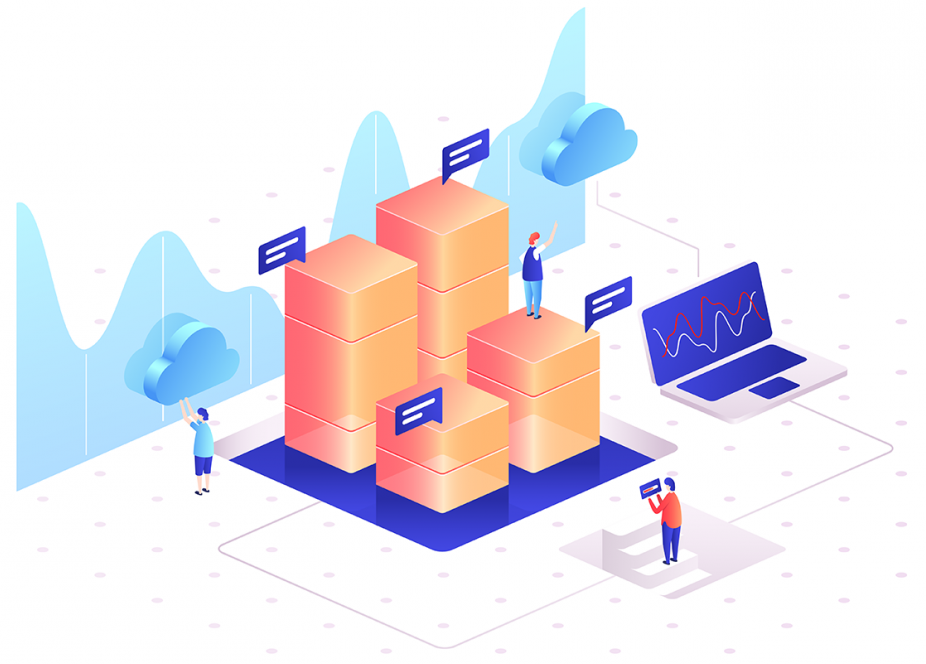
The main goal of pragmatic marketing is to try to deliver products almost precisely as specified by the customer. This is what makes pragmatic marketing one of the most efficient ways to deliver.
Pragmatic Marketing is a sophisticated marketing approach defined as a product creation process that continually adapts itself based on experience. During adaptation, the marketing strategy is tested and re-adapted to ensure that the relevance of the customer to the customers’ expectations are met.
Pragmatic Marketing involves a series of product adaptation and tests to ensure that the final product will satisfy the target market. For example, a TV manufacturer designs a TV with specific features for a particular audience. They use pragmatic marketing by testing the TV with a sample of the audience. From the feedback they get from the sample, re-adapting will be done to ensure that it fits well with user demands.
Pragmatic Marketing Rules
You can compare pragmatic marketing with agile software development. You must test and re-adapt the software until the final result evolves. You must find out what the customer wants to buy. Theoretically, presenting a perfect product in the right way will make it sell quickly.
10- - ReMarketing or Retargetting
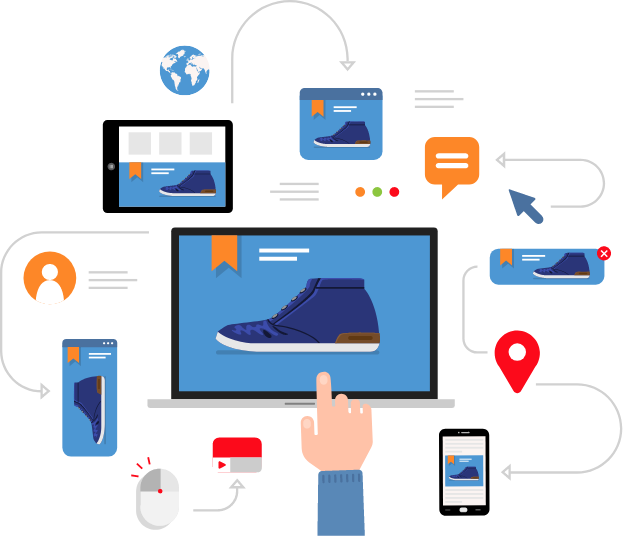
Remarketing or Retargeting are terms used to describe the process where the advertisers follow a user or customer via retargeting ad networks and to sell a product or a service to a potential customer. Imagine you visit amazon.co.uk and start searching for a cheap laptop under £500 but you cannot make up your mind in that session, so you close the browser and get on with your other work. However, when you browse the internet again for reading news or just socialising, you can see that amazon ads are showing up on those websites with laptops in them and even with prices under £500. That is what retargeting ads do to hit you again and again on cross devices you are connected to until you are convinced and make a purchase. On average a user may see a regarding ad about 7-10 times before he may be able to make a purchase.
Remarketing is great for many reasons.
Top retargeting Ad networks
Thank You...